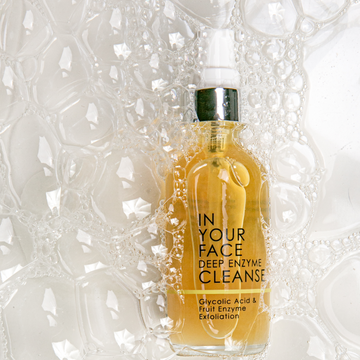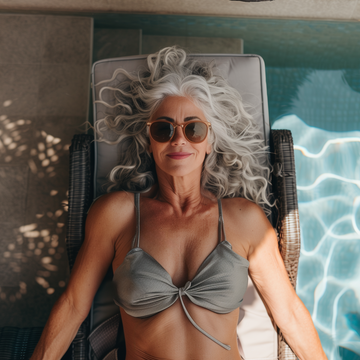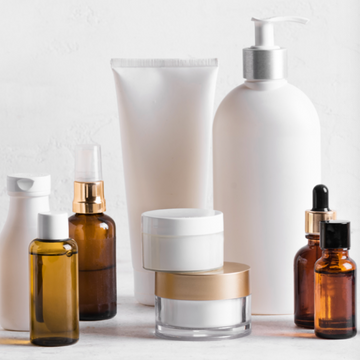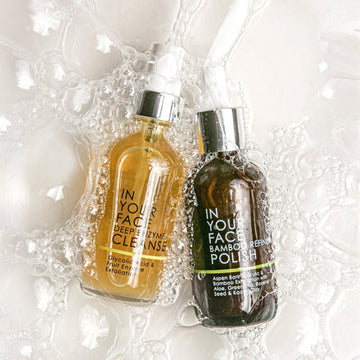
When you’ve finally reached the end of your long day, what could be more satisfying than a well-done skincare routine? Between taking off makeup (and sweat…), applying serums, and using the right moisturizer, it’s not hard to see why it’s so satisfying.
Unfortunately with the sheer size of the skincare market, it can be very overwhelming finding the right products for your skin. And once you do get your hands on products that are right for you, the next hurdle is knowing which products to use and when.
Here it is: Skin Cycling.
WHAT IS SKIN CYCLING?
Dermatologist Dr. Whitney Bowe defines skin cycling as rotating your skincare products throughout the week to give your skin a break. Skin cycling gives the skin ‘rest days,’ allowing it to repair itself after using certain products - specifically, to allow your skin's microbiome to recover.
Exfoliants and retinoids are great at preventing fine lines and wrinkles along with keeping pores clear, making them very useful products for your routine. However, it’s always possible to have too much of a good thing.
Using too many highly active products, like prescription-strength retinol or chemical exfoliants, can weaken skin over time and leave it prone to redness and irritation. You can benefit from the skin cycling technique whether your skin is normal or sensitive.
Your skin absolutely needs exfoliation and cellular rejuvenation, but you need the recovery time to truly benefit from these actives.
Skin cycling is a four-night regimen that involves exfoliating, using a retinol (or in this case, retinol alternative), and allowing skin recovery. This way, your skin will experience maximum benefits while also having time to rejuvenate and repair.
So, is skin cycling the right choice for your skincare routine? Let’s break it all down and find out!
SKIN CYCLING ROUTINE
1ST NIGHT: EXFOLIATION
The first night of your skin cycle will see you focusing on exfoliating your skin. After cleansing, pick up a chemical exfoliant, like our DEEP ENZYME CLEANSE. Don’t think twice about the word “chemical,” by the way.
Instead of toxins, chemical exfoliants contain acids that work to dissolve impurities and dead skin cells from your pores and skin surface, evening out and improving texture. Typically, you’ll find these two:
AHAs (ALPHA-HYDROXY ACIDS)
These acids are sourced primarily from plants to help remove excess skin cells while supporting production of collagen, which helps to reduce fine lines and wrinkles. A common example of an AHA is glycolic acid, which also happens to be in our DEEP ENZYME CLEANSE.
BHAs (BETA-HYDROXY ACIDS)
These acids break down oils, helping them to balance sebum (natural oil) production and keep pores clear, helping to prevent acne. The most commonly found BHA is salicylic acid, which you can find in our CLARIFYING SERUM.
But wait, I thought we were talking about exfoliators, not serums?
Well, to keep it simple, many different skincare products may contain exfoliating ingredients and exfoliate in some kind of way. This can include everything from cleansers and serums to the obvious exfoliators.
So, if you want to reduce fine lines and wrinkles and improve texture, (anti-aging, anyone?) products with AHAs like our cleansing and exfoliating DEEP ENZYME CLEANSE are the way to go, while products like our skin-healing and lightly-exfoliating CLARIFYING SERUM are better for spot-treatment of acne or fading acne scars.
Make sure to use exfoliators on cleansed skin, following up with a moisturizer like our healing, velvety rich CREAM.
NIGHT 2: RETINOL (OR RETINOL-ALTERNATIVE)
The second night of skin cycling focuses on retinoids or a plant-based retinol alternative.
Retinoids come from Vitamin A and have long been studied for their efficacy at increasing collagen production and cellular turnover, fading dark spots, and treating spots of acne.
There are various kind of retinoids that are available, including: retinol (over-the-counter, lower potency), retinal (more potent), and tretinoin (prescription-strength, high potency) but all can be rather harsh to skin, especially skin that’s sensitive or overly reactive.
Bakuchiol, a plant-based retinol alternative found in our BAKUCHIOL WONDER SERUM, serve the same purpose as retinoids, boosting collagen and cell turnover, fading dark spots, and treating acne, but without any of the irritation or peeling associated with them.
NIGHTS 3 & 4: RECOVERING
Once you’ve exfoliated on night one and used your retinol or bakuchiol on night two, the next two nights are all about giving your skin a chance to rejuvenate.
These nights, you may use skincare products with hydrating and nourishing ingredients, like:
HYALURONIC ACID
A humectant, meaning it draws moisture into the skin and holds it there, this naturally occurring substance helps skin retain moisture and firmness all day long.
You can find this ingredient in our 20% Vitamin C PLUMPING SERUM, our MARINE PEARL CREAM moisturizer, and our BLUE TANSY HYDRATING FACE MIST.
PEPTIDES
Peptides are full of amino acids, skin-repairing ingredients that boost collagen production while improving skin texture.
These natural skin boosters are found in our MOISTURIZING WASH cleanser.
GLYCERIN
Another natural humectant that draws in moisture, this ingredient can be found in our CAFFEINE LIFT EYE CREAM.
After cleansing on a recovery night, use a hydrating serum like our VITAMIN C PLUMPING SERUM, and finish it off with an occlusive moisturizer like our CREAM.
After two recovery nights, start again at the beginning of the cycle with exfoliation, and continue to rotate. If you have oily skin, you may just want to have one recovery day before starting your cycle again.
Want to start skin cycling? Have any questions or comments about how skin cycling has worked for you? Contact us here or give us a call at (727) 286-7684.
XOXO,
Denice









